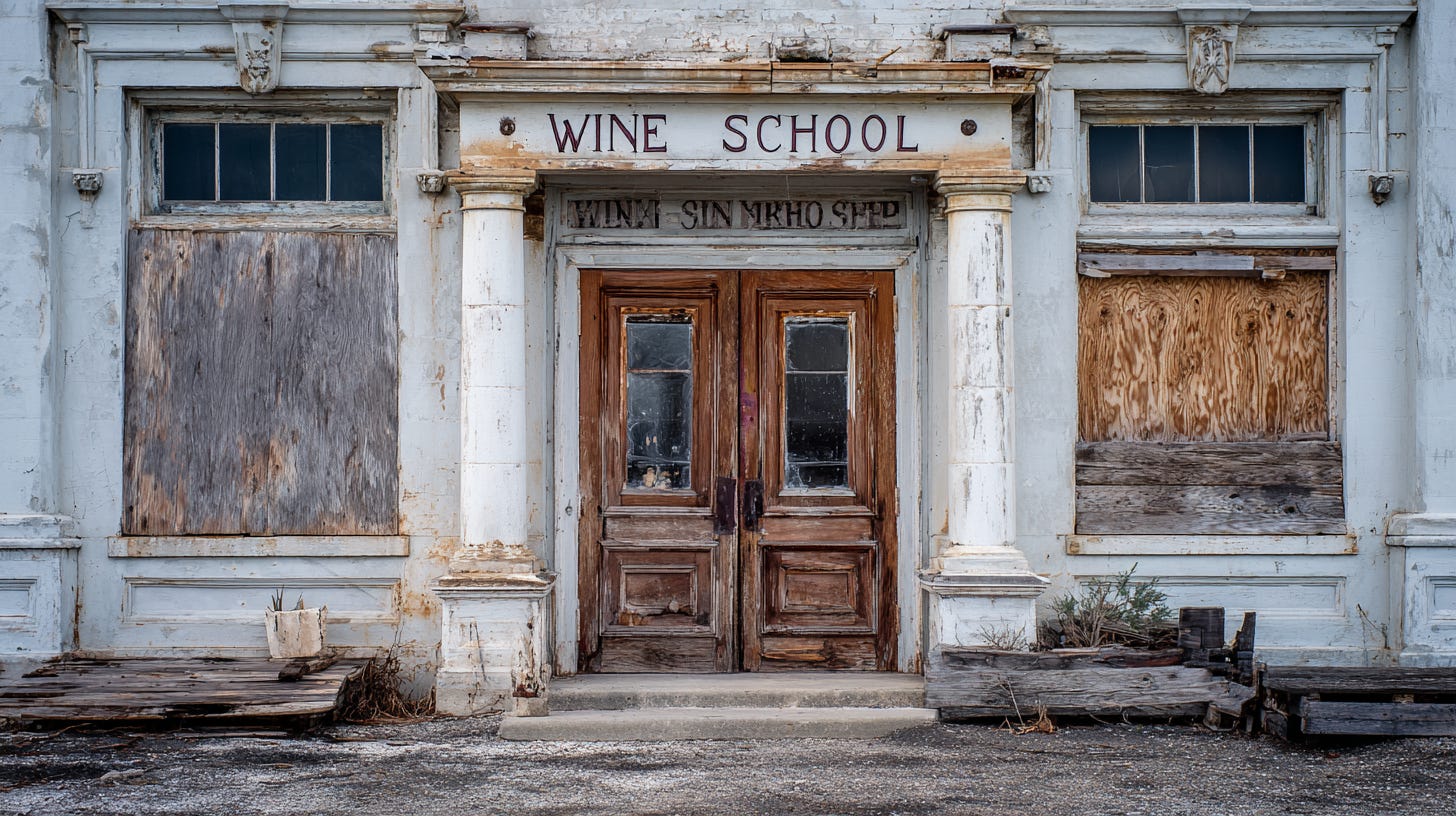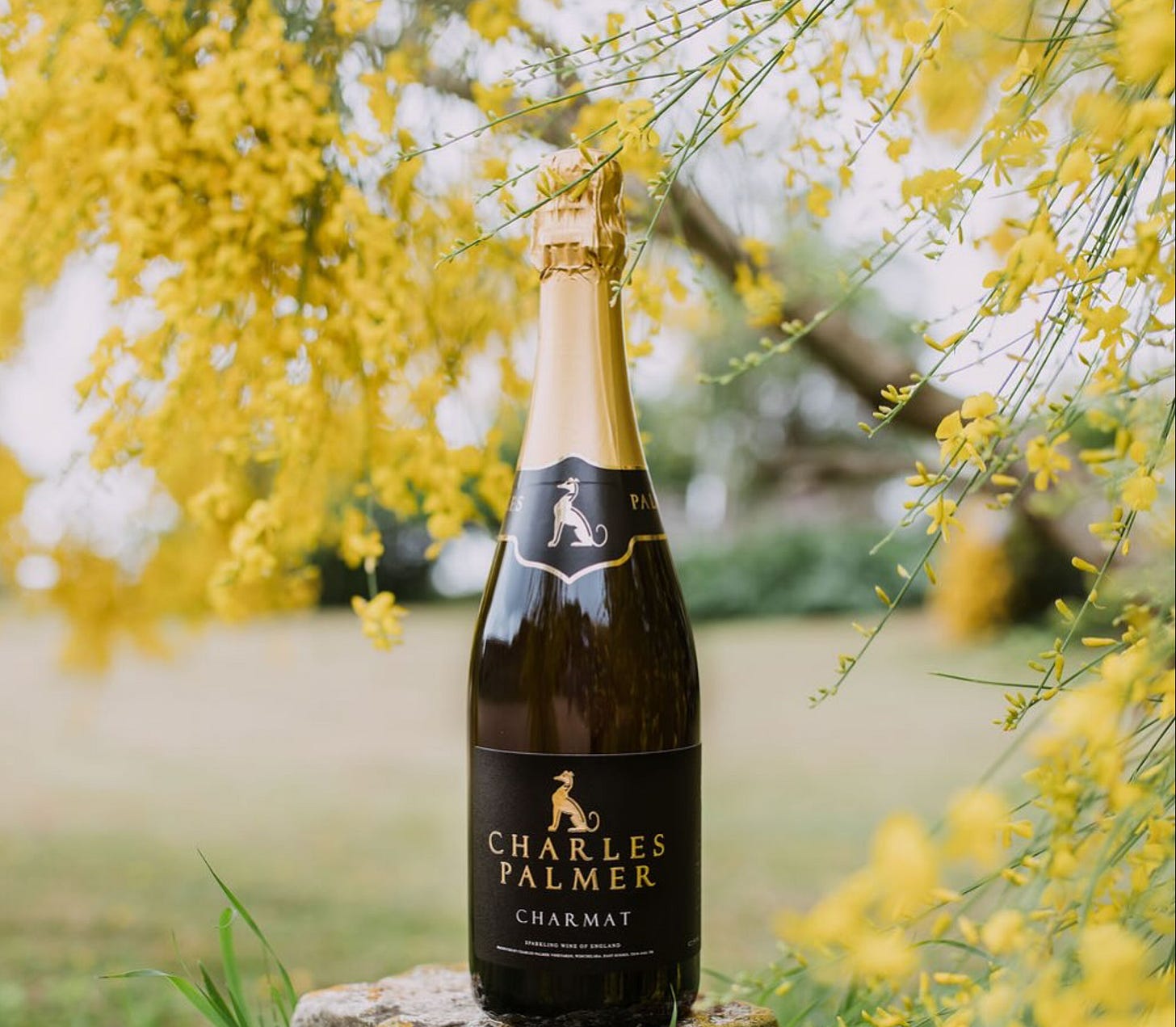We Don't Need No Education
For many online commentators, one of the keys to halting the decline in wine sales lies in the way we talk about - and teach - it.
1) Wine is losing sales.
2) Wine is seen as fusty, dusty and musty.
3) We need to get rid of traditional wine education which, in the words of Charlie Leary on Timatkin.com “is too fractured, too focused on memorising facts or learning technical aspects.”
I’m not too sure about the logical links between the three statements. The first of them is true, but how universally applicable is the second? We seem to have leaped, in a very few years from the presumption that ‘everyone’ is fascinated by wine, to the reverse: that ‘they’ all find it dull and daunting. Even if the arrival of millennials and Gen Z on the scene has led to a change in attitudes to wine when viewed statistically, where is the evidence that the previously ‘fascinated’ Gen Xers and Boomers have all lost their interest?
No fascination to lose
I have never believed in the universal fascination (where was the evidence in the form of book and magazine sales or viewer figures for TV wine shows?) and I don’t believe in the assertion of universal aversion to fusty-dustiness. I think that most people probably haven’t changed that much. What has changed is lifestyles and the range of alternatives to wine.
Some - a minority - are, as they were 20 or 40 years ago, enticed and entranced by wine, and its complex diversity; others are deterred by those very same things. Most, however, treat wine as one of the items they may or may not choose to pop in their supermarket trolley, usually without much consideration beyond the colour and price. Research has shown that where bottles are available at attractive prices at the ends of aisles in other parts of the store, shoppers do not trouble to go into the wine aisle at all.
How many casual wine drinkers ever read about wine, or talk about wine to anyone other than their friends and family? How and where are they likely to encounter stuffy ‘wine-speak’ any more than they encounter tea-speak, coffee-speak or scent-speak?
What they do undeniably encounter every time they are obliged to go through the process of selecting a wine, is a bewildering array of labels - and the prospect of handing over a chunk of cash for something they may know little or nothing about, and which they and the people with whom they are going to drink it, may not enjoy.
Having to choose
What happens when their ’safe-place’ wine isn’t on offer and they are obliged to choose between the Merlot and the Cabernet Sauvignon or the Cabernet Sauvignon or the Cabernet Franc, or the Pinot Noir, or the Tempranillo or the Blaufrankisch? Apart from relying on the possibly questionable advice of the vendor, a score of some kind or a link with a celebrity, what are they to do?
Any effort to help them by communicating the difference in the flavour and style of these wines, whatever one likes to call it, is fairly basic ‘education’. Now, we can discuss at length whether we should use words like ‘flinty’ or ‘mineral’ or ‘tannic’, or fanciful poetic imagery or references to fruits that some people, especially in some regions, may not even recognise. But, even if we can agree on a universally-comprehensible vocabulary - an almost impossible task, even within one country or culture - we’re still providing information: educating.
Just as we may have to do, in technical terms, when explaining why an English winery has decided to offer a ‘charmat’ wine alongside their ‘classic method’ version.
Perhaps, though, this ‘elementary’ education is as far as it all needs to go. The key is to avoid all that heavy WSET stuff.
Trading up
But what if the casual wine drinker, for whatever reason - possibly a special occasion or the need to buy a gift, or just out of curiosity - wants to try a pricier bottle? How, beyond saying ‘it’s better’, do we justify asking them to dig deeper into their wallets?
How to explain why one conductor or orchestra’s performances of the first four bars of Beethoven symphony might be more worth listening to than another? Or why Beatles or Dylan or Joni Mitchell lyrics can be of greater interest than those of most other songwriters? Or the ‘deep duality’ of Martin Scorsese as a movie director?
However you do it, in a blog post or a YouTube clip, you’re educating, often using at least some terms that many people will not find familiar.
Every day, hundreds of thousands of people voluntarily turn to these and other ‘educational’ efforts covering whisky, beer and perfume.
And just as the 64,000 who’ve watched Perfume 101 got to learn about ‘top’ and ‘base’ notes and the 99,000 who’ve seen Become a God of Knowledge about Beer - in 4 Minutes now know about top and bottom fermenting, many of Konstantin Baum MW’s 187,000 subscribers have been introduced to the ‘funky wild flavours’ of Grenache.
To repeat, in the US and UK, these YouTube watchers are the minority of the consuming universe for each of these products, but they punch above their weight when it comes to spending money and influencing those around them.
The view from China
And what about other cultures? As Iain Langridge a well-respected business consultant specialising in China recently confirmed to me,
“Consumers [there] are inquisitive on a level unmatched anywhere in the West. Terms such as ‘Ingredient geeks’ have been coined in other sectors such as skincare. Chinese wine consumers will bring this same desire for information and level of enquiry to wine and wine making.
For example, I have never heard any Chinese consumer complaining about the use of terms such as ‘terroir’ associated with the explanation or marketing of wine. Quite the opposite in fact.”
I totally agree that we should stop talking about having to educate the average wine drinker, and we should certainly avoid using technical wine language when communicating with them - until it is clear that they are interested enough to want to know more. At which point, we should give them the education they most appreciate.
But whatever we do with education isn’t, in itself, going to slow that decline in consumption. For that, we’re going to have to find more ways to allow casual wine drinkers to experience how the contents of those confusingly labeled bottles actually taste, and which they actually like.
Apart from writing these posts and working on le Grand Noir and K’AVSHIRI, the two wine brands I helped conceive and co-own, I also offer strategy and marketing consultancy and a range of public speaking.
If you think I can be of help to your business, or would just like to get in touch, please contact me at robertjoseph@winethinker.com







I learned WSET2 so I would not speak like that. If that was the baseline, I wanted to create a more lyrical cadence to talk about you (the consumer of) and wine. I even went so far as to create a language - something I called Wine Lyrics.
But, I had no takers. It was too different, from the containers of the past. A song sheet that was rejected by the keepers of the old language.
I like the Pink Floyd lead here, but feel like “Message in the Bottle” could really use a remix and a become a breakout hit again.
To use you example of different singer songwriters, one being more interesting than another, same goes for wineries and winemakers. You have to know the artist. I would advocate for Brand Education.
You could have a high level of wine education on a particular region, say Sonoma County where I make wine and there are vast differences in how the wine is made winery to winery. There is high variability in style, from winery to winery, that no amount of wine education can help with if you are selecting wine in a store, on a shelf, unless you know the brands.
Zinfandel in Sonoma County, even more specifically, Dry Creek Valley, ranges from sweet, alcoholic and oaky to moderately bodied and lightly or no oak in my little corner of the wine world. Your next-door neighbor will make Zinfandel in a style that doesn’t resemble a text book, wine blog, WSET exam, nothing. Forget about terroir and typicity.
Winery A picks Zin at 29 brix, water back a little so the yeast don’t die, start with WS and finish on Uvaferm 43 (ramming it home), extended maceration to 25 days, press hard, then finish in 50% new oak M+ toast, 16% alc, with residual sugar to choke down the alcohol and that’s a winery style.
Winery B picks Zin at 24 brix, ambient ferment, with possibly 6% Carignan and 5% Petite Sirah in an undisclosed field blend. 14 days ferment, light press, 100% neutral oak. This would be a more textbook Zinfandel from Dry Creek Valley circa 1985. Some wineries still do this. Most don’t, because it doesn’t sell as well.
Education is great. Do more. But when it’s time to pick the wine, you actually have to taste it and know the winery and the current style of winemaking at the winery for all that education to kick in.